automotive design
Porsche’s six-stroke engine
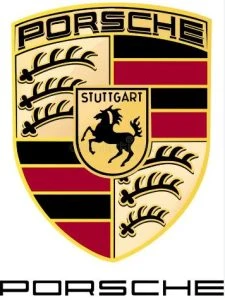
Who loves a good internal combustion engine (ICE)? Confession time would have me say that I still love the special characteristics of an ICE and the awesome soundtracks that they can make – none being more special than a sonorous and legendary V8 or even a fully vocal high-pitched straight six.
Now there is news in the hood that Porsche has patented some new technology whereby the introduction of a six-stroke cycle for an ICE of theirs will be made. The common four-stroke cycle that is already used by almost every auto manufacturer, including Porsche, has four strokes: intake, compression, ignition, and exhaust. Porsche states that the six-stroke cycle will make considerable gains in power output while also lowering its levels of emissions. This is great news for ICE fans.
How does it work and what’s the difference? As the numbers suggest, the conventional four-stroke cycle makes a power stroke one in every four times that the piston moves on its vertical axis. Thus, in a conventional four-stroke engine, each piston helps to drive the car about 25% of the time. Porsche’s new six-stroke engine will provide a power stroke twice in its six-stroke cycle – that’s two power strokes out of every six that the piston moves on its vertical axis (or one in three). This means that each piston is helping to power/drive the vehicle about 33% of the time it’s moving. The six-stroke cycle works as follows: intake fuel and air, compress the fuel and air mix, ignition (power), intake more fuel and air, ignition (power), and exhaust.
By allowing the piston to have a variation in its travel length inside its chamber via clever internal gearing and a special vent design, the six-stroke engine can produce more power strokes within its cycle. For the first three strokes, the piston works like a normal four-stroke. Then, on the fourth stroke, the special gearing allows the piston to drop lower in its chamber, presenting some more scavenging ports that allow more fuel and fresh air to enter the cylinder while the exhaust gases escape out the exhaust ports. The fifth stroke ignites the fresh fuel mix, and then the sixth cycle gets rid of all burnt/spent gases.
Who wouldn’t want a great sounding faster and more efficient new Porsche sports car? However, this is not all that the clever team at Porsche have been up to. Porsche has already worked towards creating a fuel that is considered to be a carbon-neutral synthetic fuel made from carbon dioxide (CO2) that has been captured from the atmosphere. That’s right, it is essentially using or recycling atmospheric carbon as fuel for their ICE vehicle.
While still leading the charge for ICE fans, Porsche has not abandoned EVs. It is also worth noting that Porsche is also going in all guns blazing with EV technology as well. Most new models of Porsche have an EV in their line-up already, and the Taycan is a pure EV.
All the same, I’m fascinated by this new six-stroke technology and am looking forward to seeing it in whatever new offerings Porsche decides to serve up.

ANCAP Updates
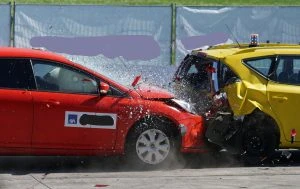
There have been recent changes to the tests at the Australasian New Car Assessment Program (ANCAP). The new vehicles making their way to our showroom floors are more complicated and go beyond merely being a tool for getting you from one point on the map to another. There are many technologies that we are familiar with now that weren’t available on many cars even a couple of decades ago. Most of us will know what a seatbelt is, and what ABS and ESC do, and that our cars have airbags. Seatbelts have been common in cars since the seventies, while the other two features have been common since the early 2000s. Even as far back as the nineties, you’d slip yourself into a Saab 9000, any BMW, or Honda Legend and there would be a logo on a dash panel or steering wheel saying that behind this was an airbag at the ready. Anti-lock braking technology, commonly known anti-brake skid (ABS), continued to become more sophisticated and reliable throughout the 1980s. By the early 1990s, ABS was a standard feature in many new vehicles and was considered pretty cool and a lifesaver in the wet. Electronic stability control (ESC) was also a pretty big game-changer in terms of the way a vehicle could be kept in line and pointing in the right direction when any hint of wheel skid was detected. ESC and ABS were linked into the same system.
Today, ESC and ABS have all sorts of extra electronic wizardry around them that can tell these features to engage into action quickly. You think of all the camera technology, and laser and sonar technology that can detect how far the back end of a bus is away from the nose of your vehicle, which just happens to be catapulting towards the bus far too fast. These onboard systems have been designed to detect the situation and engage the braking systems (ABS and ESC) in a timely fashion in order to stop an accident from occurring. This wizardry is now looking out for other road users’ safety as well as your own as you guide the vehicle from the driver’s seat. New vehicles can now keep themselves inside their own lane, should you happen to become distracted. The systems will even detect an incoming pedestrian that has decided it’s a great idea to drink far too much alcohol at the pub and then stagger home across a busy street without using the traffic light crossing at night. (On a more serious note, this sort of drunken decision can be fatal – when I was in high school, a friend of mine hit a drunk in black clothes who ran in front of her car on a wet night when she was on her P-plates. Witnesses were there to tell the cops that there was no way she could have seen him coming or braked in time, so she didn’t face consequences for manslaughter, but she was traumatized, as you can imagine.)
New levels of safety technology are being incorporated into the newest vehicles we can buy. This has meant that our mates at ANCAP have had to bring in new tests and rating criteria for these vehicles. The latest criteria were updated last year (2023). A maximum of five stars can be given out to a vehicle that has undergone crash testing and other safety tests. Vehicles are required to meet minimum score thresholds for each star rating level, and these rating requirements and testing criteria are updated every 3 years to keep up with all of the new models that seem to be pouring in from all parts of the globe.
A side effect of these updates means that older cars that had a five-star rating when they first entered the market wouldn’t get the same rating now. This is something to be aware of if you are considering buying a second-hand car or an older model.
The 2024 Mitsubishi’s Triton Dual Cab ute was the first Dual Cab ute tested under the latest ANCAP rating criteria. The sixth-generation Triton earned itself a five-star safety rating. Regularly tweaking the changes to the safety rating criteria at ANCAP is important because it keeps pace with all the new safety features and technologies that make their way into new vehicles entering the Australian and New Zealand automotive markets.
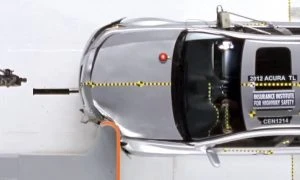
Silly Features That Never Made It

In most modern cars, you can find a selection of neat features to make the task of driving easier and more pleasant. Some of the ones I particularly like include active cruise control, ambient lighting, steering wheel mounted audio controls, reversing cameras and Bluetooth connectivity so my phone and car talk to each other. I guess most of us have our favourite driver aids.
However, over the over 100 years that the car has been around, manufacturers and designers have come up with some features that flopped, mostly because they were plain silly ideas. We’re not talking about things that have been phased out because they are no longer in high demand, such as cigarette lighters (which have morphed into 12-volt power outlets), or because they were a bit iffy in terms of safety (such as bench seats). Instead, we’re talking about ideas that were totally nuts. Here’s the looniest ones that were put forward by designers with a straight face.
In-Car Toilets
In the late 1940s, an inventor named Louie Mattar customized his Cadillac so that he could go on a long-haul trip of around 6000 miles without stopping, even to refuel. While most of us would be more interested on how you manage to get something that goes for that long without refuelling, which wouldn’t be silly, quite a few designers in the 1950s considered installing one of the other things that Mattar put in his customized car: a toilet. Yes, a toilet that the driver or passenger can use without leaving the car. However, this proved to be impractical, considering how easy it is to simply pull over at a public loo, or café or garage – or, in remote and rural areas, a handy bush.
Flamethrowers

Yes, seriously. In the late 1990s, when violent crime was a real problem in Johannesburg, South Africa, one inventor decided that the best way to protect drivers from carjackings was to install aftermarket flamethrowers that could be activated in self-defence. This was designed to use gas to create a fireball that didn’t damage the paint. The laws at the time allowed South Africans to use deadly force in self-defence, and the fireballs sent out by the “BMW Blaster” weren’t lethal; they “merely” blinded the would-be carjackers. The downsides were that (A) a matching fireball was released from the opposite side of the vehicle, potentially injuring innocent bystanders and (B) flamethrowers have been outlawed by the United Nations. The invention won the Ig-Nobel Peace prize for 1999 and the rumour is that 25 BMWs received this “upgrade”.
http://news.bbc.co.uk/2/hi/africa/232777.stm
Children’s Partition
Another one from the 1950s, back when rear seatbelts (and possibly seatbelts full stop) weren’t really a thing, and kids who monkeyed around in the back seat while the car was moving were threatened with “Don’t make me stop this car!” Some designers thought that perhaps it would be less distracting (and pleasant) for the driver to ensure that the children were neither seen nor heard, courtesy of a privacy partition of the sort found in very posh limousines. However, most parents preferred to know if their kids were screaming, fighting or giving each other black eyes in the rear seat, so this idea didn’t catch on.
Automatic Seatbelts
This one’s from the 1970s to the 1990s when more automatic features were becoming popular. One that didn’t catch on was the automatic seatbelt. An automatic seatbelt worked by taking the shoulder strap from the back of the seat and fastening itself onto the B-pillar when the engine started or the door closed. The user had to buckle up a lap belt him/herself. This idea was very exciting, and in 1977, a law was passed in the US that stated that by 1983 all new cars should either have automatic seatbelts or airbags. The first commercial vehicle to have these automatic seatbelts was the 1975 Volkswagen Golf, and many other manufacturers had offerings with this safety feature, including Hyundai and Toyota. However, the downside was that a seatbelt that isn’t permanently fixed to the B-pillar isn’t as secure as one that is, and users still had to clip in the lap belt separately. They also didn’t play nicely with child seats and were a pain for getting in and out if you were carrying anything. As someone with long hair that occasionally gets pulled into the slot of ordinary retractable inertia seatbelts, I imagine that these automatic seatbelts would have been a right pig for people with long hair. So airbags were the safety feature that won out.
If anybody has experience of a vehicle with an automatic seatbelt, let us know in the comments what you thought of them!
Joystick Steering Systems
Although the original horseless carriages of the late 19th century sometimes used a rudder system rather than a wheel, the steering wheel has become the one we’re all familiar with. However, during the 1990s, Saab decided to fit its some of its 9000 models with a joystick steering system. Fortunately, not all Saab 9000s had them and plenty had the ordinary wheel. The joystick was too easily knocked and wasn’t precise enough. This was particularly an issue, given that the Saab 9000 was pretty responsive when you put your foot on the accelerator (I used to own one, and I rather miss the way that it could dart into the gaps at the intersections like a hummingbird spotting a tasty new flower…).
Coffee Machines
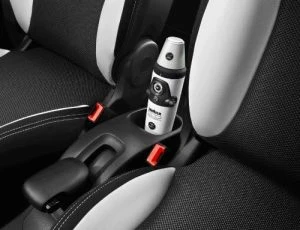
Although coffee doesn’t originate in Italy, all the words we use at the local coffee shop are Italian (latte is the Italian world for “milk”, for example). So it’s not surprising that Fiat, in 2012, attempted to include a real working compact espresso machine that sat in the centre console in its 500L models released in Europe. It was, however, short-lived, probably because it took up the driver’s armrest, and comfort won out over the convenience of coffee on the go, and possibly because hot liquids and sharp corners are not a happy combination. However, there is still part of me that thinks that this idea isn’t so silly and wouldn’t mind one.
4WD and AWD
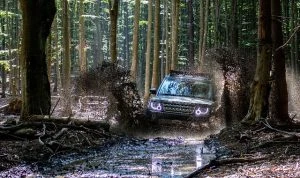
Getting the best grip on the road or terrain is what will get you moving forwards from A to B in the shortest time. Ever since the invention of the first cars, two-wheel-drive has been the mainstay for delivering the engine’s power out to the wheels. At first, two-wheel drive was usually via the rear wheels, as it was much simpler to run a drive shaft from the engine at the front of the car back to the rear wheels to get grip from the rear wheels and to let the front wheels have the job of steering the vehicle.
In saying that, there is also history of 4WD being experimented with back as early as the late 1800s in combination with a traction engine, and, of course, in World War II, the 4WD Willys Jeep was a game-changer.

Once mechanical engineering and quality improved over time, the concept of having the engine over the front axle and the front wheels as the driving wheels as well as for steering the vehicle lowered production costs. A combination of rear-wheel-drive and front-wheel-drive cars were available as a matter of course right up to the 1970s and 1980s. Through the 1990s up until the present day, it was more common to see front-wheel-drive cars for everyday driving.
However, it was the 1980s that proved to be a very innovative period in automotive design and mechanical engineering. The greatest advancement in road-going cars was arguably the use of four-wheel-drive to establish greater levels of grip. As racing and supercars demanded faster cars, the need to control all that power (and actually make better use of it) was essential for winning, especially as there was an ever-increasing number of high-performance cars being pulled out of roadside hedges or being wrapped around power poles.
Enter Audi. Audi’s Quattro technology marked a significant moment in high-performance cars’ and supercars’ history. The Audi Quattro’s technology was essentially the dawn of the modern supercar’s 4WD system, and when Audi entered the World Rally Championship in 1981 with their Audi 80 Quattro car, they were unbeatable. The second-place car was over twenty minutes behind the race-winning Audi!
What is the difference between 4WD and AWD?
This is a good question to answer, because there are numerous new cars of all shapes and sizes available with AWD or 4WD. Generally speaking, four-wheel-drive (4WD) is the older off-road system that has the power split 50:50 front to rear. Add a diff-lock into a 4WD system, and these are off-road kings. Four-wheel-drive can be disengaged so that just two-wheel-drive (2WD) can be used on easier terrain, including for when you’ve finished your off-road adventure and you just want to head back home on the tarmac with 2WD only.
The basic principle of an all-wheel-drive (AWD) system is that it can deliver the optimum level of torque to each wheel individually, thus giving the best possible drive and traction. AWD systems tend to be permanently engaged, but with the power split front to rear, along with individual wheels being variable according to what each wheel is sensing and therefore demanding at the time. AWD systems are more complex in that they use sensors which send precise information and values of each wheels’ speed, torque, wheel slip/spin, brake pressure, and steering input to the AWD’s central control system. The control system then adjusts the torque supplied to each wheel.
Land Rovers and many other new serious off-road vehicles use AWD systems with various diff-locking abilities, which also make them real off-road kings. Four-wheel-drive systems are simpler in nature and are thus simpler and cheaper to fix than more complex AWDs. That said, many manufactures like Subaru know how to make solid, dependable AWD systems for their cars and SUVs that are mainly aimed at everyday on-road use and trips up to the ski fields, but with the credentials for performing well even in some fairly serious off-road terrain.
If you live in a part of the world where gravel roads and rainy seasons collide, then an AWD vehicle with decent ground clearance should be parked up your driveway. If your day includes a trek out to the building site, feeding out to stock, or traversing any serious off-road terrain, then a heavy-duty 4WD or AWD vehicle will be your companion. The good news is there are plenty of these sorts of vehicles about, many of which can be bought new at a good price via Private Fleet.
